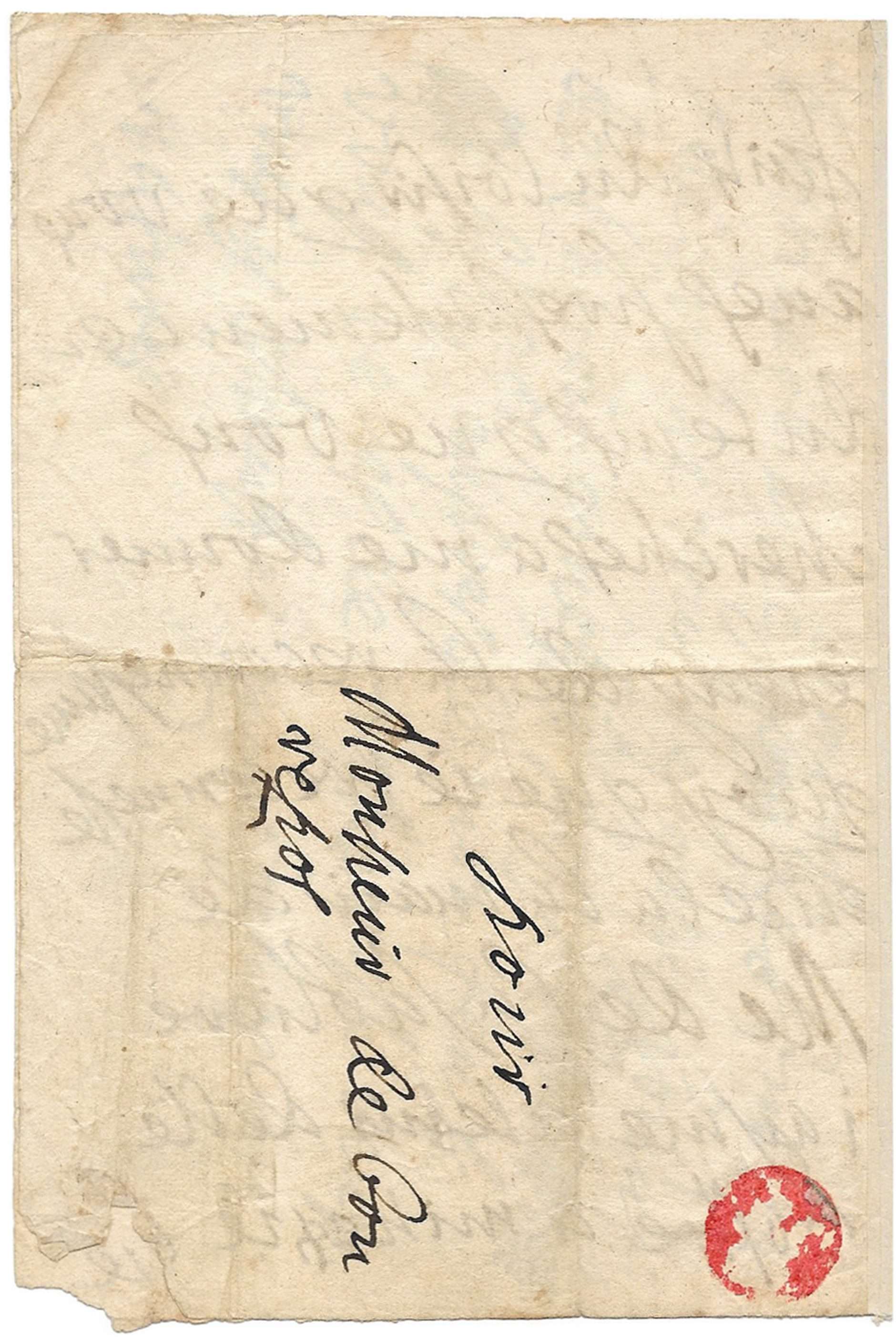LENCLOS (de), Ninon (1620-1705)
Autograph letter to François d’Usson de Bonrepos
N.p.n.d. [between 1675 and 1701], 3 p. in-8°, black in on laid paper
« I shall be by my fire these days; if you happen to come to our side, come warm yourself by it »
Fact sheet
LENCLOS (de), Ninon (1620-1705)
Autograph letter to François d’Usson de Bonrepos
N.p.n.d. [between 1675 and 1701], 3 p. in-8°, black in on laid paper
Autograph address on fourth page
Four words crossed out by Ninon de Lenclos
Broken was seal (no text loss)
Very rare intimate letter from Ninon de Lenclos, the most vivacious courtesan of the Grand Siècle
« J’ay fait bien des choses depuis quatre jours dont je me suis repantie et je vous assure monsieur que vous y avez autem de part que ma senté qui en est assez alterée.
Il faudroit mieux profiter que je ne faits du loisir que vous avez presentement et du tems que vous cherchez a me donner. J’en ay de la reconnessance quoy que je reconnesse en cela la main de Me de la Sabliere.
J’ayme a tenir d’elle vostre amitié. Je la cultiveré avec beaucoup de soin afin que vous ne vous ressentiez poin de l’avoir crue. Je seray ces jours cy auprès de mon feu, si vous venez de nostre coté venez vous y chauffer. Pardonnez au ratures. »
A courtesan of legend, Ninon de Lenclos captivated her contemporaries through the independence of her morals and of her mind. Her salon, which she began hosting in 1667, welcomed — in addition to her admirers — the literary, artistic, and scientific elite of all Paris. Her respectability was firmly established ten years later, when she herself was admitted, in 1677, to the salon of Marguerite de la Sablière.
Her guests included some of the most prestigious figures of the age: Jean-Baptiste Lully, Jean de La Fontaine, Nicolas Boileau-Despréaux, the Prince of Condé, Henri de Sévigné, and even the Duke of Saint-Simon. The latter, in his Memoirs, paints a scathing portrait of François d’Usson de Bonrepaus (c. 1654–1719), a young lover of Ninon, thirty-four years her junior: “A very small man, stout, with a rather ridiculous appearance, and an unpleasant accent — but who spoke well, and with whom there was much to learn and even to be amused […]”.
The correspondence between the two lovers, spanning from 1675 to 1701 and comprising thirteen letters and notes (Martine Hardy, Ninon de Lenclos: le parcours d’une libertine au XVIIe siècle, 2011), attests to the enduring bond between the courtesan and a prominent member of the State Secretariat for the Navy, who served as Louis XIV’s extraordinary ambassador to England, Denmark, and the Dutch Republic.
Provenance:
Private collection





